Lenovo K6 Power review: A multimedia powerhouse
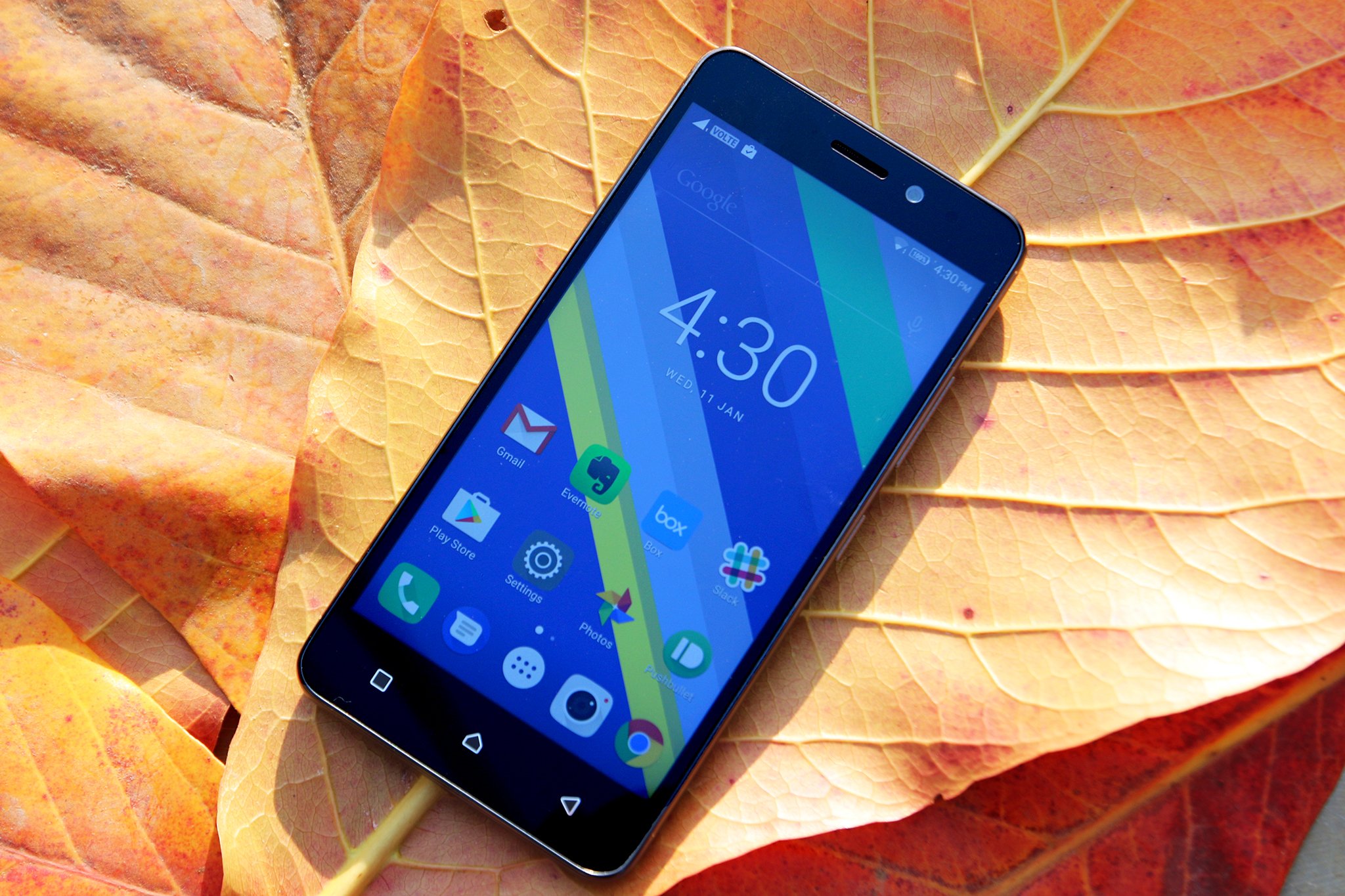
Quick take:
Lenovo has been steadily gaining ground in India over the last 12 months, and the K6 Power is the company's best offering yet in the entry-level segment. With a metal body, decent internals, and amazing battery life, the K6 Power offers a lot for ₹9,999, making it one of the most desirable phones in this category.
The good
- Compact design
- Excellent battery life
- Great stereo speakers
The bad
- Average camera
- Slow software updates
- Weird placement of charging port
Delving in
Full review
Budget phones have come a long way. If you were looking to buy a phone for under ₹10,000 a few years ago, you had to either settle for an entry-level Samsung phone that was horrible at practically everything, or a handset from the likes of Micromax, Lava, or Intex — purveyors of the most generic phones out there.
Then came the Chinese contingent of Xiaomi, Lenovo, Huawei, OPPO, and Vivo, and the smartphone landscape changed significantly. Today, if you're in the market for a sub-₹10,000 handset, there's no dearth of choice. Xiaomi's Redmi 3S Prime is an excellent proposition, and the manufacturer's Redmi Note 3 continues to be one of the best-selling phones on the market.
The LeEco Le 1s is also a decent alternative, as is ASUS' ZenFone Max if you're looking for two-day battery life. Then there's Motorola's E3 Power, which while not necessarily having the same hardware prowess manages to deliver a clean UI devoid of any customizations.
Get the latest news from Android Central, your trusted companion in the world of Android
Lenovo has done especially well last year with the entry-level Vibe K5 and the Z2 Plus in the mid-range category, and the Moto G4 in the budget segment. Lenovo is now in second place in the smartphone segment with a market share of 9.6% and is setting its sights on Xiaomi's Redmi 3S with the K6 Power.
The K6 Power shares a lot of similarities with the Redmi 3S — both phones are powered by the Snapdragon 430, and they offer a similar set of specs. With hardware no longer being the differentiator, it all comes down to the software, and in that regard, Xiaomi has fared well with MIUI 8, which has over 200 million users globally. Can Lenovo hold its own with the K6 Power? Let's find out.
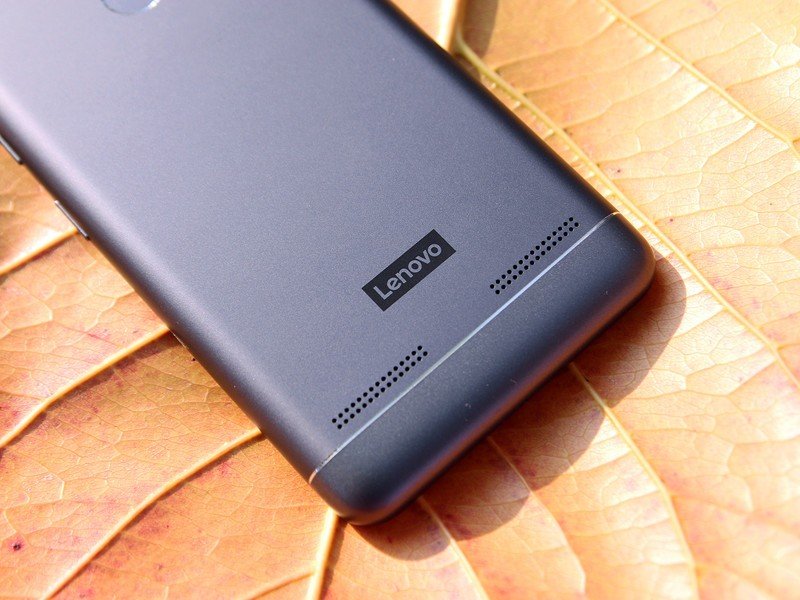
All you need to know
Lenovo K6 Power Specs
| Category | Features |
|---|---|
| Operating System | Vibe Pure UI based on Android 6.0.1 Marshmallow |
| Display | 5-inch 1080p (1920 x 1080) IPS LCD panel 441ppi pixel density |
| SoC | Octa-core Qualcomm Snapdragon 430 Eight Cortex-A53 cores at 1.4GHz 28nm |
| GPU | Adreno 505 |
| RAM | 3GB RAM |
| Storage | 32GB storage microSD slot up to 256GB |
| Rear camera | 13MP LED flash PDAF |
| Front shooter | 8MP 1080p video recording |
| Connectivity | Wi-Fi 802.11b/g/n, Bluetooth 4.2 (A2DP), GPS, microUSB, 3.5mm audio jack |
| Battery | 4000mAh battery |
| Fingerprint | Rear fingerprint sensor |
| Dimensions | 141.9 x 70.3 x 9.3 mm |
| Weight | 145g |
| Colors | Silver, Gold, Dark Grey |
About this review
I (Harish Jonnalagadda) am writing this review after using the Lenovo K6 Power for two weeks in Hyderabad, India. The phone was connected to Airtel's 4G network for the duration of the review, and received a minor software update with stability fixes.
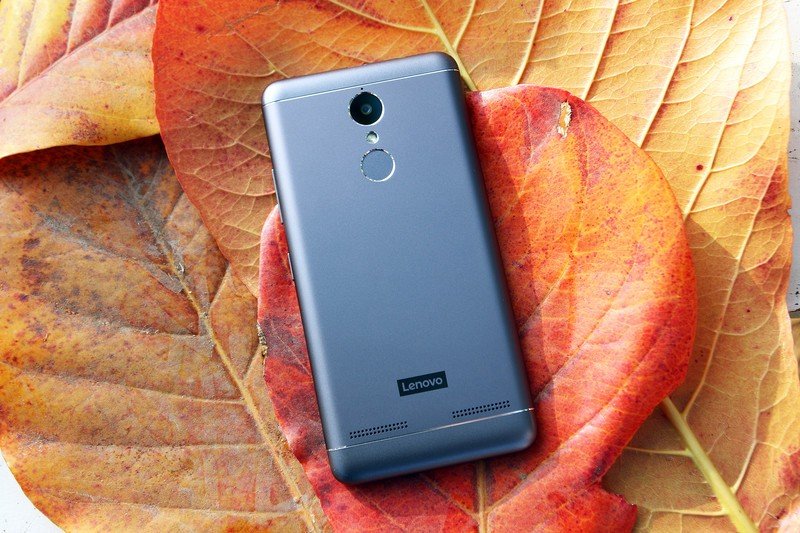
The cookie-cutter model
Lenovo K6 Power Design and screen
Like most handsets in this segment, the K6 Power offers a metal body with gently curved sides that make it comfortable to hold. The design won't turn any heads, but the phone itself is well-built and can withstand the occasional tumble. The front is relatively simple, featuring a 5-inch display with capacitive navigation buttons below.
The power and volume buttons are located on the right, and the SIM card slot is on the left. Oddly enough, the Micro-USB charging port is located at the top of the phone, next to the 3.5mm jack. The power buttons offer decent tactile feedback, and the navigation buttons are easy enough to get acquainted with, although the lack of a backlight makes things difficult.
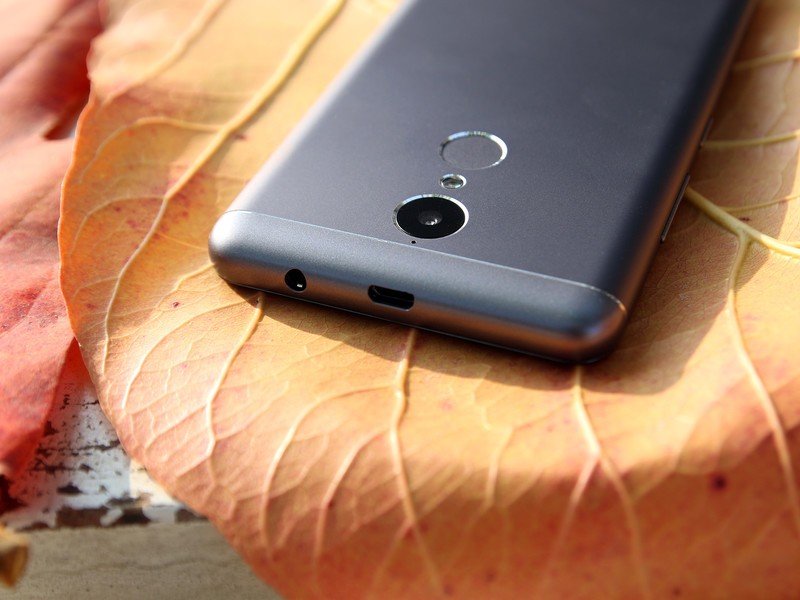
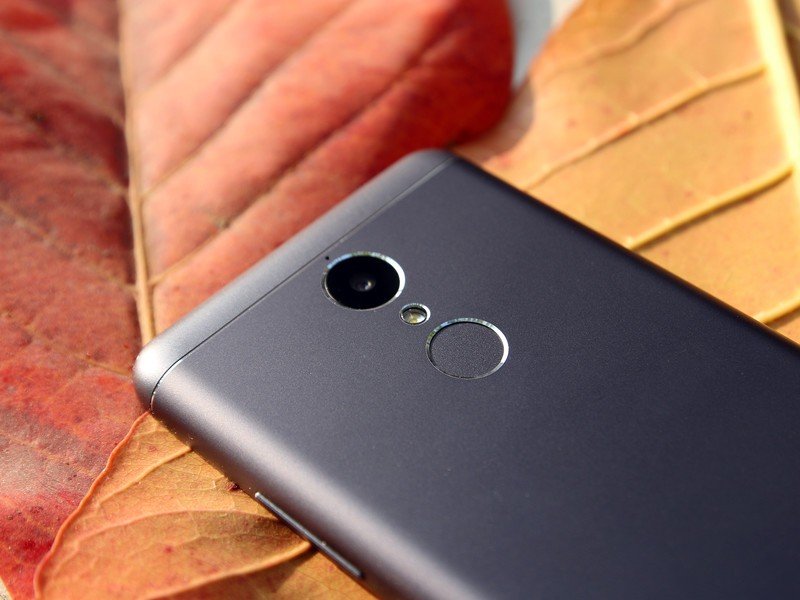
Around the back, you have chrome accents around the camera sensor, lens module, fingerprint sensor, and the antenna lines, which serves to break up the grey color scheme. The phone offers stereo speakers certified for Dolby Atmos, but their placement at the back isn't ideal. Considering that the phone is being targeted at those looking to consume media on the go, it would have made much more sense to put the speakers at the front of the device.
If you've seen the Redmi 3S Prime or any other recent budget phone from a Chinese brand, the design of the K6 Power should be immediately familiar. At 9.3mm and a weight of 145g, the K6 Power is certainly not sleek by any measure. Most of that added bulk is taken up by the 4000mAh battery, which is easily one of the best features of the phone. More on that later.
The design is premium and boring at the same time.
The ambient light sensor takes longer than me to acclimate to brightly-lit surroundings (and I take a good long time), so more often than not I had to manually increase brightness to view the screen while outdoors. That said, the display has a maximum brightness of 450 nits, which makes reading text under harsh sunlight relatively easy.
The 5-inch Full HD IPS LCD display has saturated colors and great viewing angles, and with a pixel density of 441ppi, viewing multimedia content on the phone is a delight. However, the colors tend to be on the cooler side. While there isn't an option to adjust color temperature, you can set the color balance to normal mode, which results in more realistic colors. There's also a night mode of sorts called brightness protection.
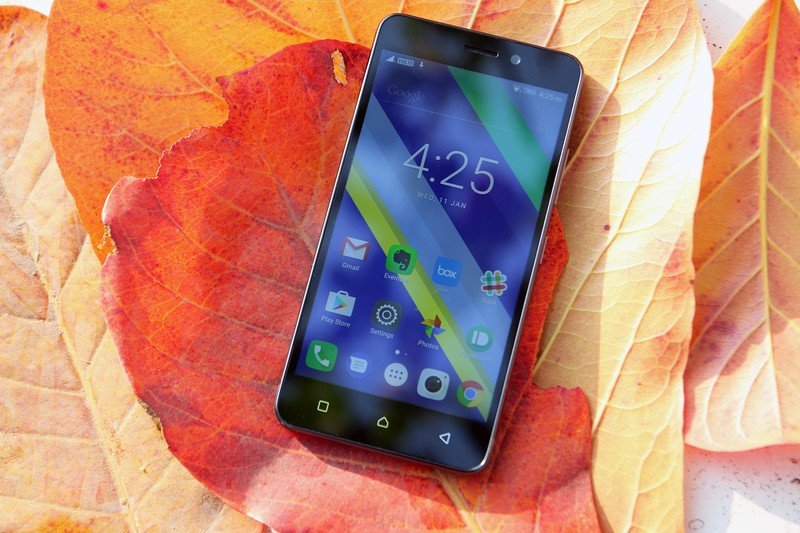
28nm is still great
Lenovo K6 Power Hardware
The K6 Power is powered by the Snapdragon 430, offering four Cortex-A53 cores at 1.4GHz and the Adreno 505 GPU. There's 3GB of RAM, 32GB storage, and a microSD card, and the phone has dual-SIM connectivity, although it is a hybrid slot, which means you can use two SIM cards or a microSD card along with the primary SIM card. The K6 Power charges through Micro-USB, offers 4G with VoLTE, and Bluetooth 4.2.
The hardware is more than adequate to blaze through everyday tasks. In the two weeks I used the phone, I haven't seen any lags or slowdowns when browsing, messaging, or in other day-to-day tasks. Overall, the K6 Power is ideal if you're in the market for a compact handset with great multimedia chops.
In fact, the larger trend in 2016 was how capable budget phones have become. For everyday usage, the K6 Power, Redmi 3S, or any number of handsets in this segment are perfectly serviceable. That'll get better this year as we see SoCs made on the 14nm node make their way to the entry-level segment.
The K6 Power handles everyday tasks just fine, but it isn't built for gaming.
However, the K6 Power does have its limitations, particularly when playing games. While the Snapdragon 430 is decent for everyday use, it cannot handle visually-intensive titles. If gaming on the go is a primary consideration, then you'll be better served by the Snapdragon 650-powered Redmi Note 3.
The stereo speakers at the back are amazing. The sound quality is detailed, and it doesn't get distorted at high volumes. You can also tweak Dolby Atmos settings to tailor the sound to your listening preferences. The only issue with the speakers is their placement at the back. Similarly, the fingerprint sensor at the back is quick to authenticate and accurate, and the compact size means that you won't have to reach far to place your finger on the scanner.
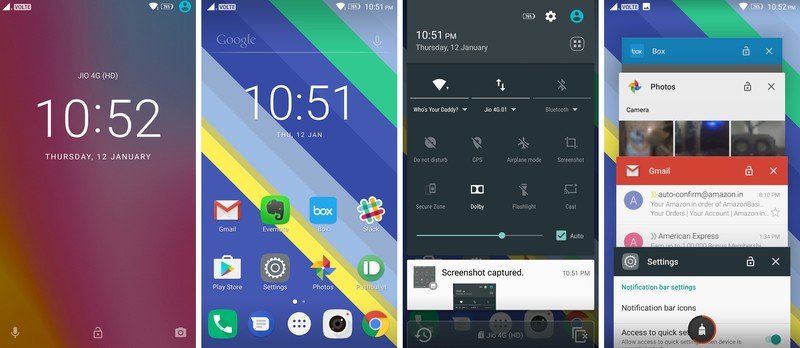
Calling it pure doesn't make it so
Lenovo K6 Power Software
Unlike most Chinese ROMs, Vibe UI comes with an app drawer. The app drawer has Lollipop-style horizontal scrolling, and the top bar lets you search for apps and has a section that displays the four most-recently used apps. The phone comes with Android 6.0.1 Marshmallow out of the box, and while that's good, Lenovo hasn't fared so well when it comes to security updates. In January 2017, the K6 Power is still on the June security patch.
Vibe UI is uncluttered, but you still get plenty of customizability.
The notification panel is close to what you'd find on stock Android, and offers a two-stage action to reveal the quick toggles. You can set the width of the columns and customize the toggles based on your preferences. While it's great that Lenovo hasn't tried to customize the notification panel itself, the company has added a pop-up bar at the bottom that lets you clear notifications. There's also a history button that lets you read notifications you may have swiped away by mistake. Both buttons serve a purpose, but bundling them at the bottom of the screen looks tacky. Lenovo could have implemented it better.
That said, Lenovo has done a decent job of adding features to the interface, including gestures like double tap to wake, pressing the power button twice for launching the camera, and doing the same with the volume button to take an image. You can also quickly take a photo by using the fingerprint sensor as a shutter button.
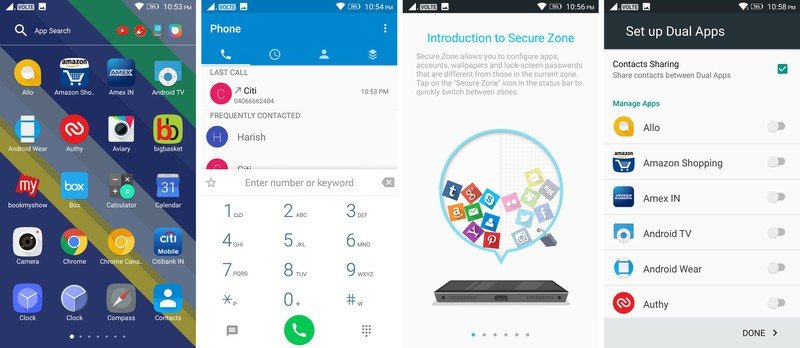
There's an app lock feature called Secure Zone that lets you lock apps with a fingerprint or password. You'll still continue to see notifications for apps that are locked by a password, but these will be differentiated with a red dot at the bottom of the icon. Lenovo also offers a dual apps feature, allowing you to run two instances of an app simultaneously. If you have two Facebook or WhatsApp accounts, you can run them on the same device.
Overall, Vibe UI is cleaner than most ROMs from Chinese vendors, and it has features that most users would actually end up using. The phone does come with a lot of pre-installed apps, including Evernote, McAfee Security, SyncIt, ShareIt, Truecaller, and UC Browser, but these can be uninstalled.
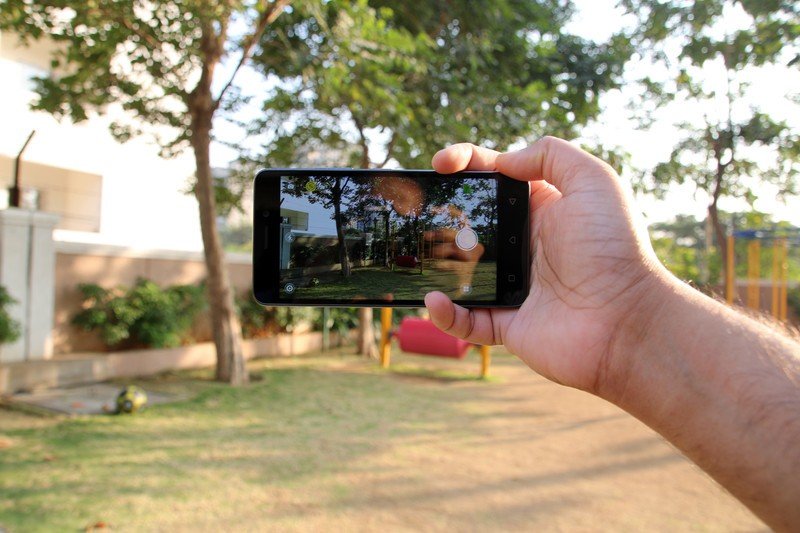
Your mileage may vary
Lenovo K6 Power Camera
The K6 Power has a 13MP camera powered by Sony's IMX258 sensor, and an 8MP front shooter with a wide-angle lens. The camera app offers a wealth of options, including a manual mode that lets you adjust the ISO, white balance, exposure, and more. You also get panorama mode, Artistic HDR, fast- and slow-motion video, and a night mode that lets you add filters to spruce up shots in low-light conditions.
You'll have to put a lot of effort to get food shots.
The app lets you switch between stills and video, and you can toggle between the front and back cameras, turn off flash, access settings and the gallery (which is Google Photos by default) with ease. There are options to tweak ISO and white balance settings from the settings, select the resolution of photos, enable a grid, choose video quality settings, add location info, and so much more.



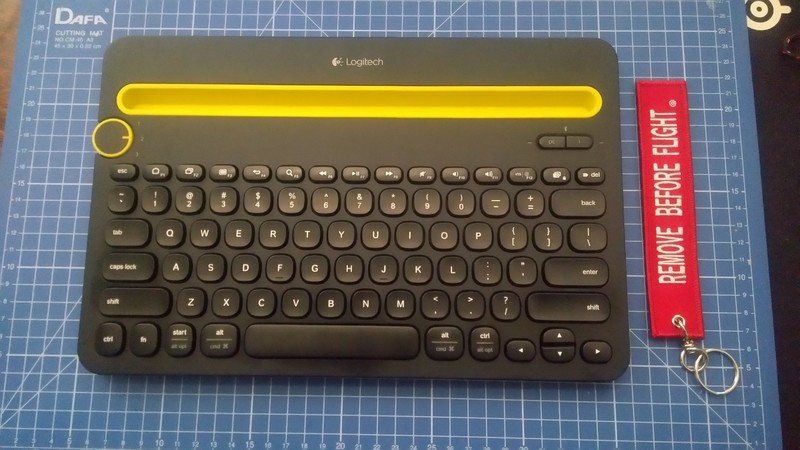
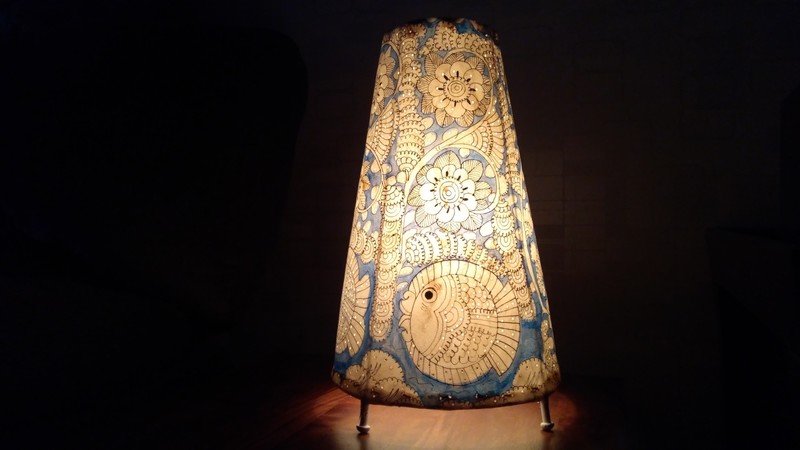
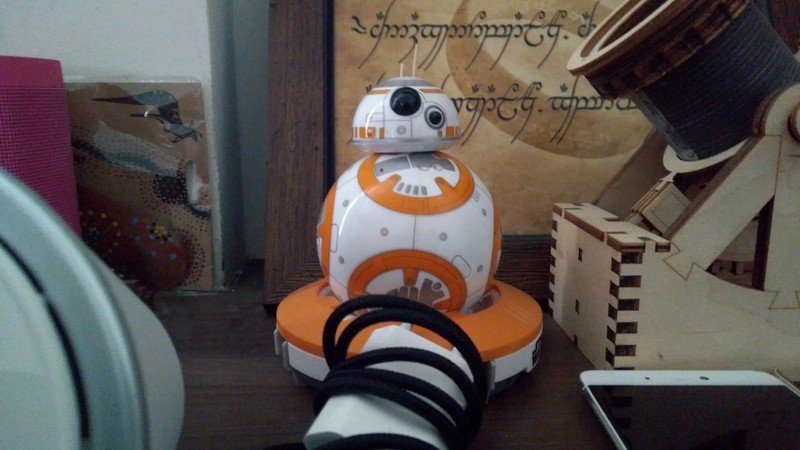
The camera itself takes good photos in brightly-lit conditions, but you'll see a drastic dropoff in quality in low-light situations. Photos taken during the day are detailed enough for social platforms, but zoom in and you'll start noticing noise. The situation is exacerbated for low-light imagery, and you can easily make out that the image processing algorithm's proclivity to smoothen edges.
The camera is serviceable if all you're looking to do is take images for sharing on Facebook, Instagram, Twitter, or WhatsApp, but that's about as functional as it gets.

It's like the Duracell bunny
Lenovo K6 Power Battery life
Battery life on the K6 Power is incredible thanks to the 4000mAh battery and the frugal processor. The phone easily lasts a day with regular use, and more often than not you'll get two days' worth of usage from a full charge. It's a good thing that the battery on the K6 Power lasts as long as it does, because the phone doesn't have fast charging. It takes over two hours to fully charge the device, and the placement of the charging port makes it awkward to use the phone while charging. On the bright side, you can use the phone as an external battery pack, through which you can top up other devices.
The K6 Power has insane battery life.
To further conserve battery life, the phone comes with a battery saver mode that kicks in automatically once the charge goes below 15%. There's also an Ultimate Power Saver mode that disables all functions other than calling and messaging, essentially turning the K6 Power into a dumb phone. Overall, you won't have any problems with running out of battery on the K6 Power, even if you're a heavy user that consumes a lot of multimedia throughout the day.
Power and poise
Lenovo K6 Power Bottom line
The K6 Power has a lot going for it: the metal body feels sturdy and great to hold in-hand, and the compact size allows for easy one-handed usage. The dense display is a delight when it comes to consuming multimedia, and the speakers complement the experience, even though their location at the back isn't ideal.
The Snapdragon 430 along with 3GB of RAM allows the handset to blaze through everyday tasks with nary a hiccup, and the huge 4000mAh battery means you'll be able to watch videos and play games for longer.
Vibe UI offers a ton of features without feeling bloated, and the interface itself is vastly different from what you'd find on other Chinese phones. The camera is average, but that's entirely in line with other phones in this segment. Combine all of that with an aggressive ₹9,999 retail price, and you have a phone that offers great value for money.
A delightful budget phone
Should you buy it? Yes!
There are hundreds of budget phones available today, but most of them aren't worth your time. The K6 Power is one of few handsets that is. For ₹9,999, you're getting a phone that offers a lot for its asking price. If you're looking for a well-rounded phone for consuming videos on the go, look no further.
If camera quality is the primary consideration, then you should take a look at the Redmi 3S Prime. It has a better camera and is available for ₹8,999, but you'll have to settle for a 720p display and put up with the vagaries of MIUI 8. For gaming, the Redmi Note 3 is a better choice, although the variant with 3GB of RAM and 32GB storage will run up to ₹11,999. For its price, the Lenovo K6 Power is a great choice.

Harish Jonnalagadda is Android Central's Senior Editor overseeing mobile coverage. In his current role, he leads the site's coverage of Chinese phone brands, networking products, and AV gear. He has been testing phones for over a decade, and has extensive experience in mobile hardware and the global semiconductor industry. Contact him on Twitter at @chunkynerd.
